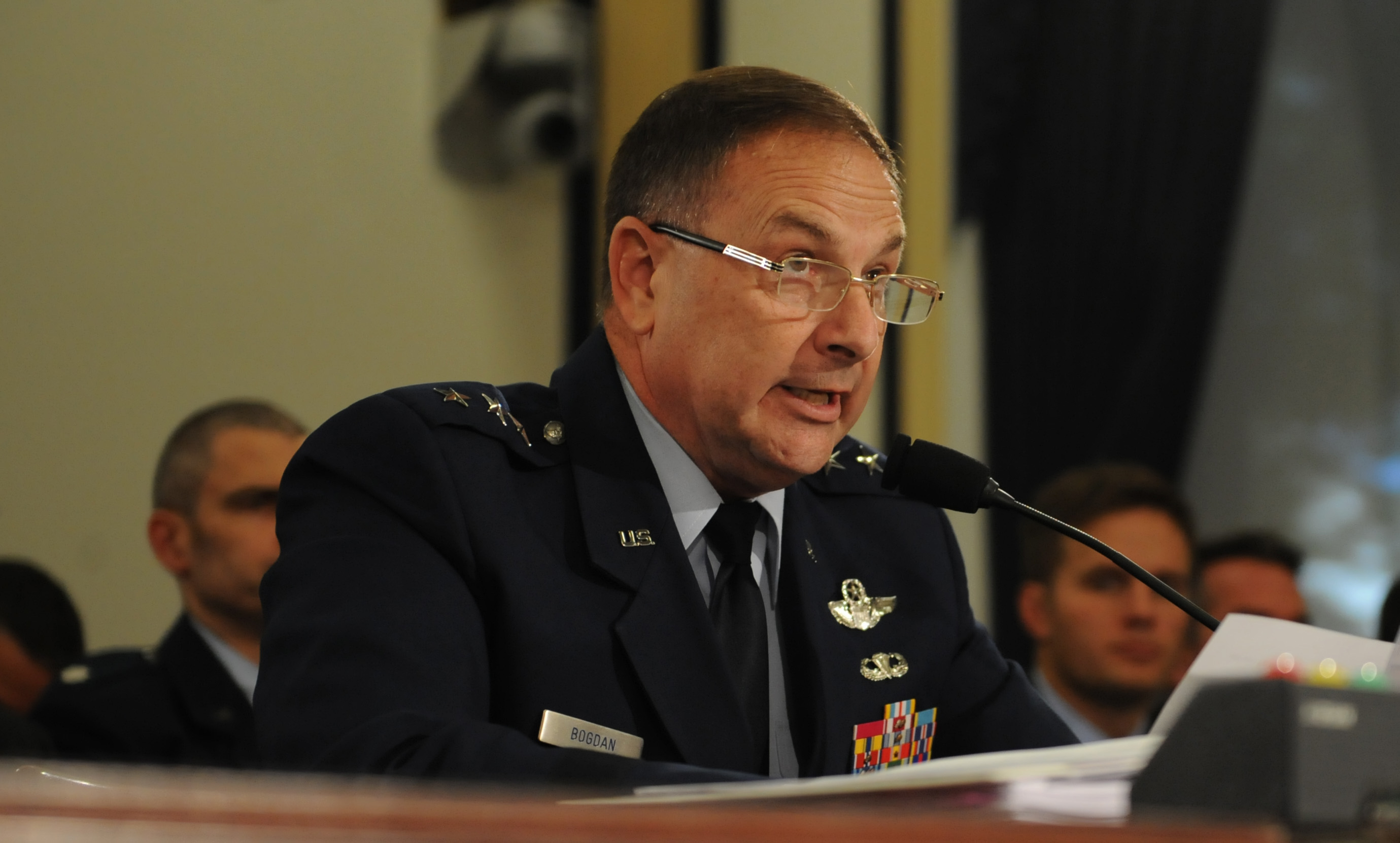By Senior Airman Hailey Haux, Secretary of the Air Force
Public Affairs Command Information / Published October 28, 2015
WASHINGTON (AFNS) -- Leaders in the F-35 Lightning II Joint
Program Office and the Air Force F-35 Integration Office testified on the
fifth-generation aircraft’s development before a House Armed Services
subcommittee Oct. 21 on Capitol Hill.
Fielding a number of questions from Tactical Air and Land
Forces Subcommittee representatives, Lt. Gen. Christopher Bogdan, the F-35
program executive officer, and Maj. Gen. Jeffrey Harrigian, the F-35
Integration Office director, Headquarters Air Force, assured them the program
is making progress.
“The F-35 program today is executing well across the entire
spectrum of acquisition, to include development and design, flight test,
production … and building a global sustainment enterprise,” Bogdan said. “The
program is at a pivot point today, where we are moving from slow and steady
progress to what I call a rapidly growing and accelerating program.”
Overall, the program has flown more than 42,000 hours, to
include the international jets and the U.S. service-specific variations.
The F-35 is a complex program made more challenging by the
fact that it’s still in development, even as we are flying it in the field.
Recent tests on the safe-escape system revealed a problem that would result in
lighter-weight pilots possibly suffering major neck injury upon ejection.
“The program is working with our industry partners on three
specific improvements that will provide lightweight pilots that same level of
protection and safety as all other F-35 pilots,” Bogdan said in his written testimony.
“These three improvements are: one, a reduced weight helmet that weighs 6
ounces less than the current helmet … two, a pilot ‘weight switch’ on the
ejection seat that reduces the opening shock of the parachute by slightly
delaying the parachute’s opening for lightweight pilots; and three, a head
support that will be sewn into the parachute risers that will reduce the
rearward head movement of the pilot when the main chute of the ejection seat
opens, reducing the pilot’s neck loads.”
Comparing the F-35 with the F-16 Fighting Falcon’s
maneuverability was another concern; however, both generals were confident in
the F-35 program and its capabilities.
“The F-35’s technology is designed to engage, shoot and kill
its enemy from long distances, not necessarily in visual ‘dogfighting’
situations,” Harrigian said in his testimony. “There have been numerous
occasions where a four-ship of F-35s has engaged a four-ship of F-16s in
simulated combat scenarios, and the F-35s had a clear operational advantage because
of the sensors, weapons and stealth technology. The F-35 has been optimized for
the current trends of warfare, where the enemy is engaged and defeated from
long distances, but it will still be able to maneuver aggressively when
required to defeat and kill threats.”
Overall, the F-35 program is on track to be delivered on
time and on cost, and Bogdan and Harrigian agree it’s a capability needed for
the joint force to be successful.
“As with any big, complex program new discoveries,
challenges and obstacles will occur; however, we believe the combined
government/industry team has the ability to overcome current issues and future
discoveries in order to successfully deliver the full F-35 capability to the
warfighter,” Bogdan said. “The Joint Program Office will continue executing
with integrity, discipline, transparency and accountability, holding ourselves
accountable for the outcomes on this program.
“We recognize the responsibility the program has been given
to provide the backbone of the U.S. and allied fighter capability with the F-35
for generations to come, and that your sons and daughters, grandsons and
granddaughters may someday take this aircraft into harm’s way to defend our
freedom and way of life. It is a responsibility we never forget."








No comments:
Post a Comment